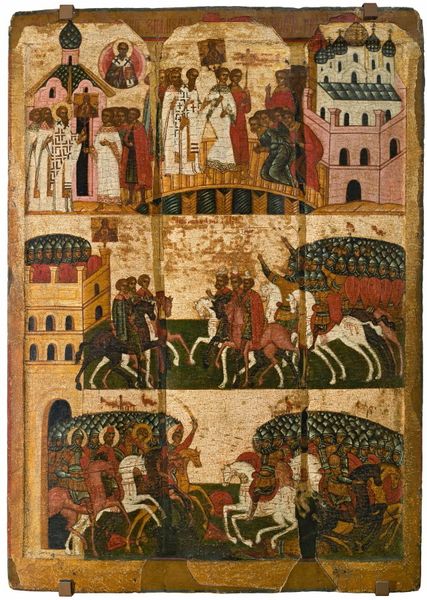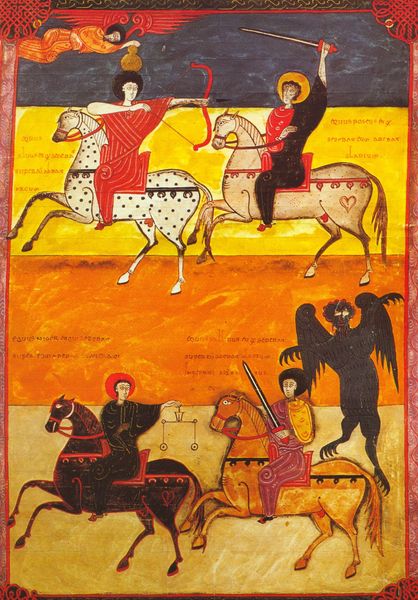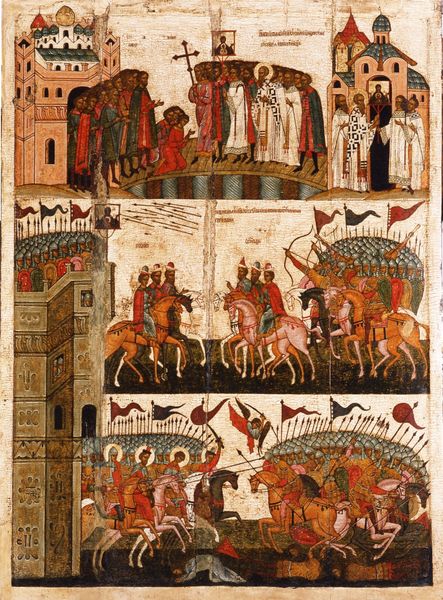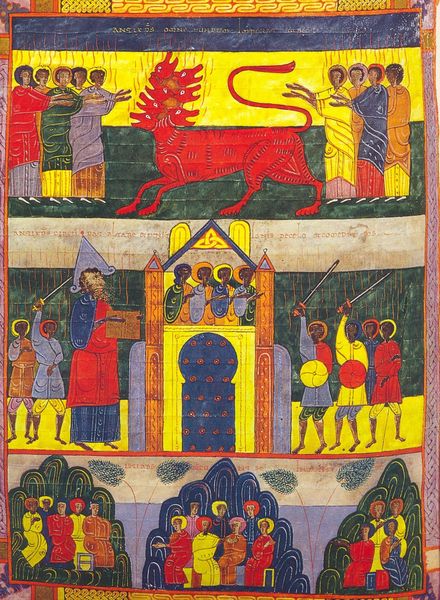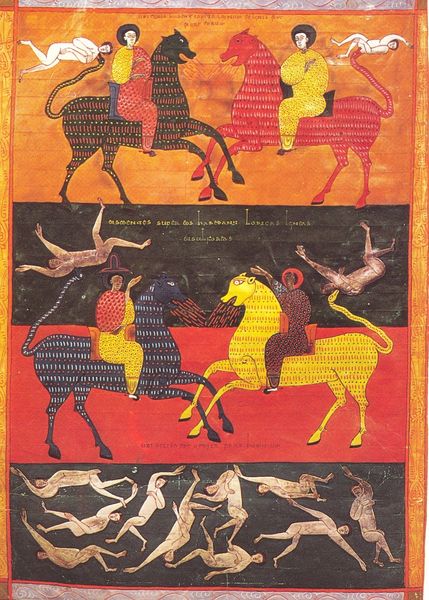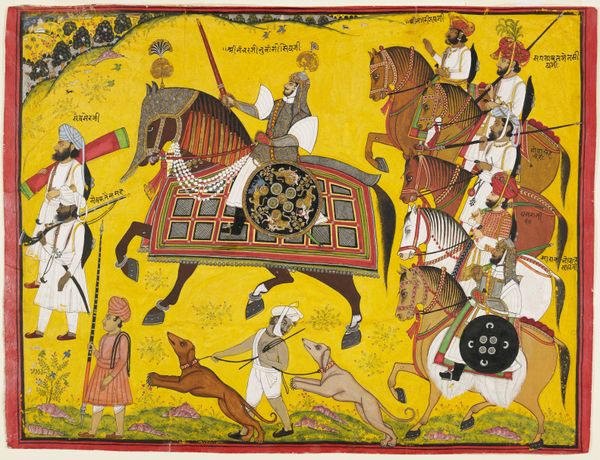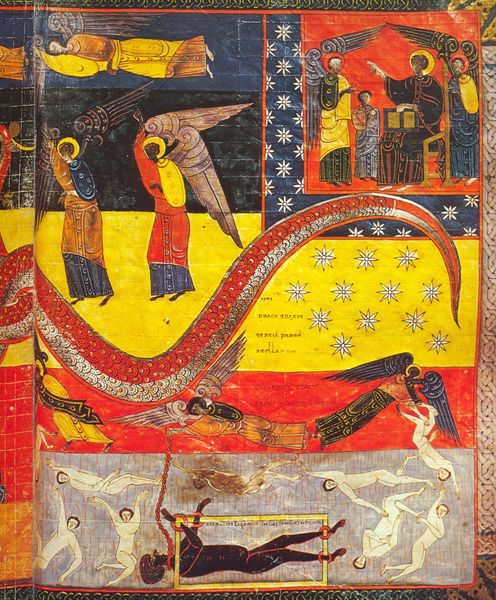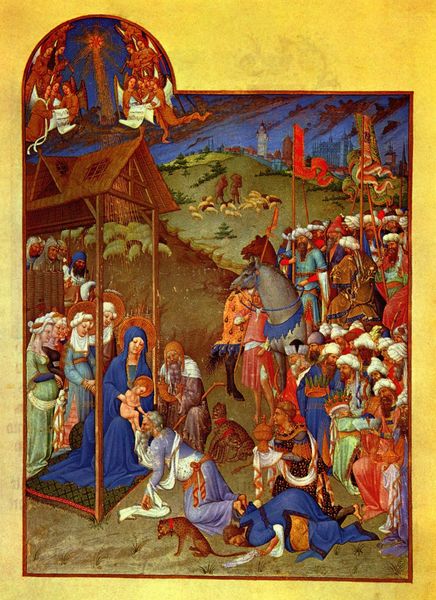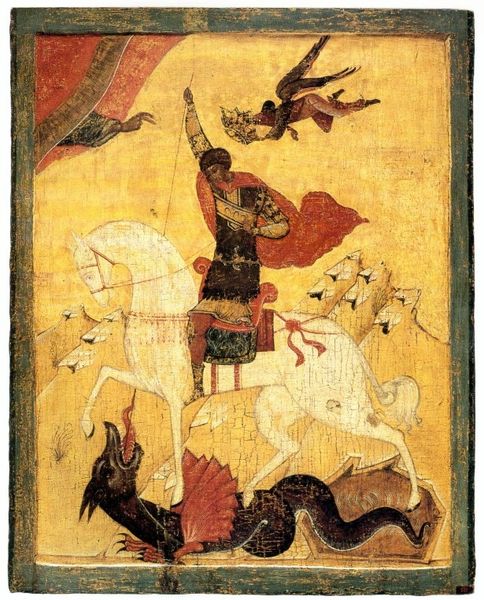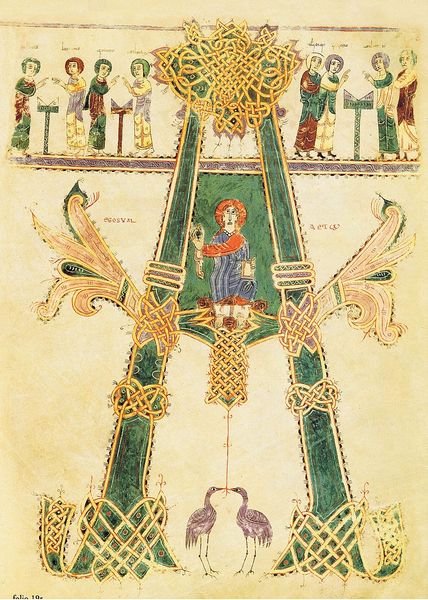
tempera, painting, textile
#
byzantine-art
#
medieval
#
narrative-art
#
tempera
#
painting
#
textile
#
figuration
#
geometric
#
miniature
Copyright: Public domain
Around 1050, Facundus created this tempera on parchment, titled "Le Cavalier Fidele et Veritable". It depicts the armies of heaven from the Book of Revelation. Painted in Spain during the Christian Reconquista, the image creates meaning through its clear visual code, using stars, horses, and riders to suggest power. The geography and history of Spain at the time may well have influenced this artwork. As Christian kingdoms struggled to reclaim territory from Muslim rulers, the imagery of holy war and divine support, combined with the institutional power of the Christian church, was used to reinforce faith and inspire the population. This illuminated manuscript is both a reflection of and a contribution to the social structures of its time. The historian can better understand it by researching the political context, religious culture, and artistic conventions of medieval Spain. The meaning of art is always contingent on its social and institutional context.
Comments
No comments
Be the first to comment and join the conversation on the ultimate creative platform.
